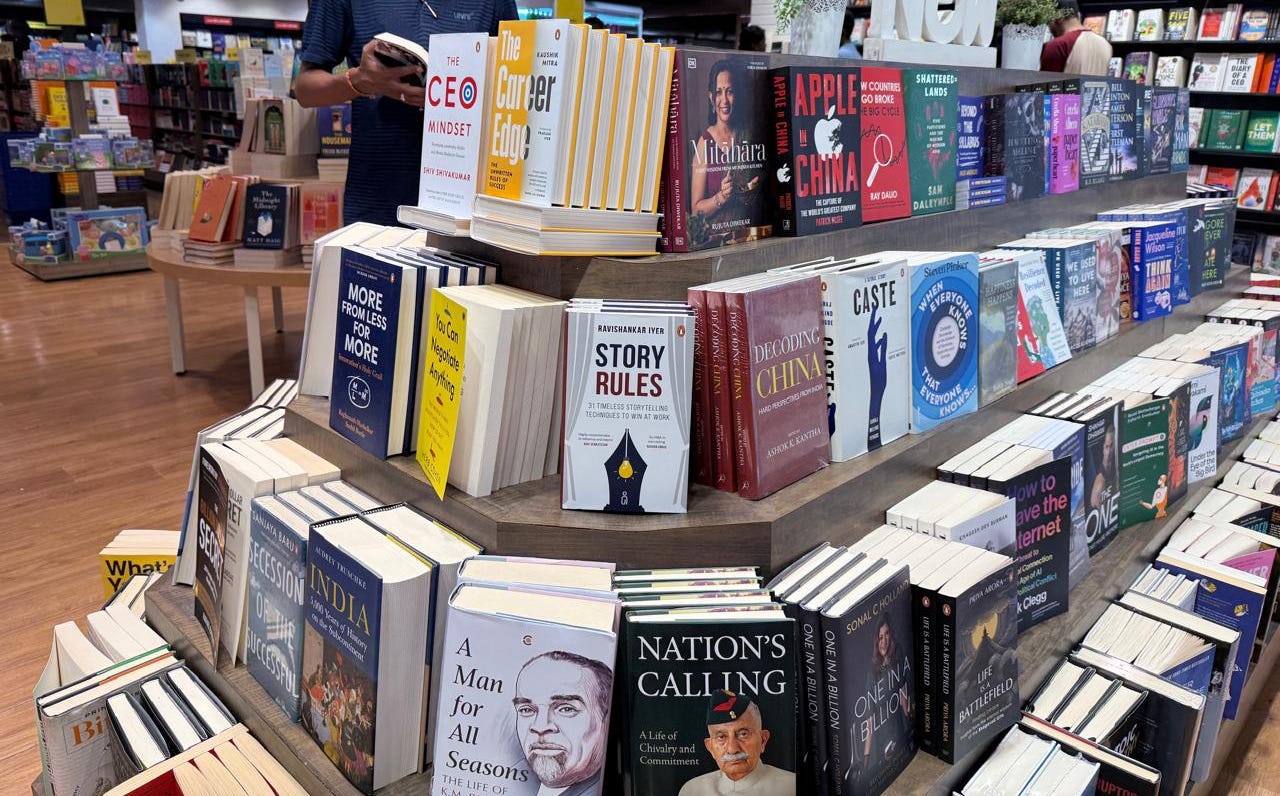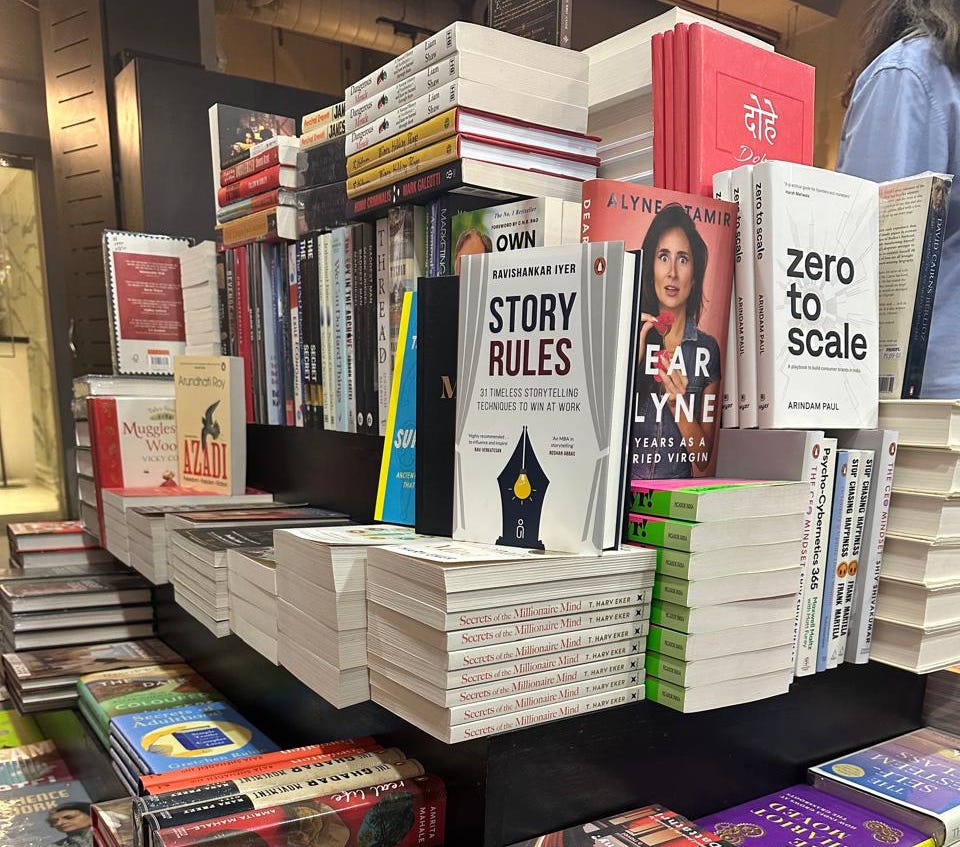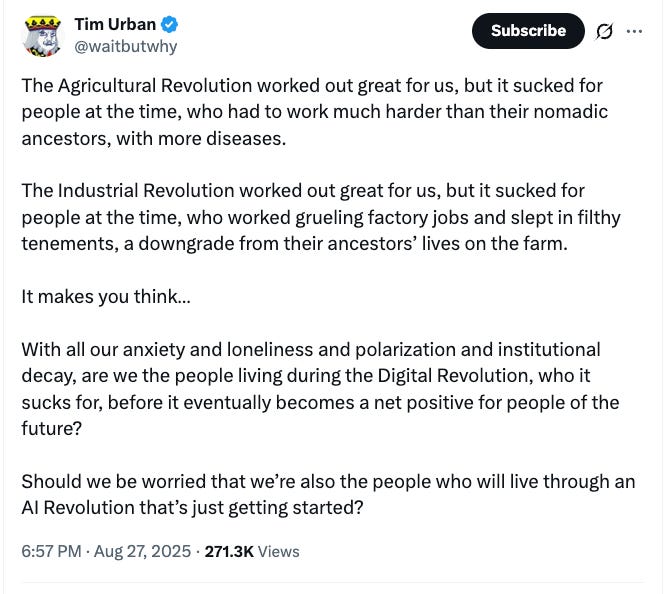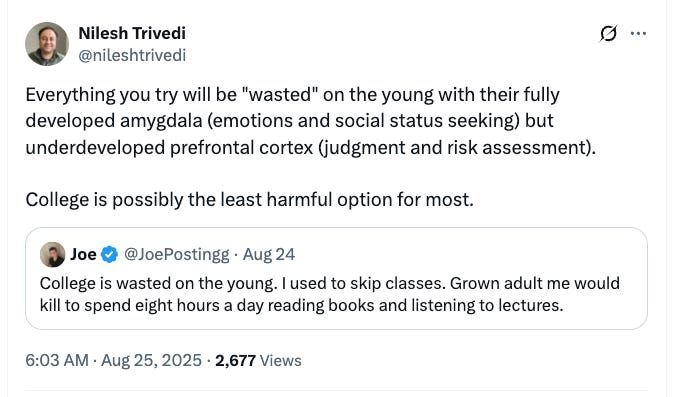Using Spaced Repetition to Learn Better
Ok, so the book should be available in some stores now! A couple of friends shared pics from Crossword stores in Chennai and Gurgaon—exciting!


Let me know if you find it in bookstores in your city!
And yes, some of you might be thinking—boy this Ravi has gotten super-active on LinkedIn lately. Posting every day!
Yes, that’s the nature of the game in book marketing. I have realised that I would have to work as hard on promoting the book, as I have done writing it!
But, for me, this is not just about selling more copies. I truly believe that the book’s ideas can be useful to everyone at work. So most of the content I share would be either:
- Stories from my own life, which can be readable posts on their own
- Ideas, examples or stories from the book, which would be tips that people can use in their work
In addition to LinkedIn/X posts, there’s a bunch more stuff I have planned for the near future:
- A YouTube Channel (yes!)
- Appearances on podcasts (let me know if you are aware of any good ones I should come on)
- A bunch of events and conferences
There’s a WHOLE lot of things to do and only so much time. If you have any specific inputs for me, please drop a line.
And apologies if the intensity of sharing becomes too much… please bear with it for the next several months!
Thanks for reading The Story Rules Newsletter! Subscribe for free to receive new posts and support my work.
And now, on to the newsletter.
Welcome to the one hundred and thirty-first edition of ‘3-2-1 by Story Rules‘.
A newsletter recommending good examples of storytelling across:
- 3 tweets
- 2 articles, and
- 1 long-form content piece
Let’s dive in.
𝕏 3 Tweets of the week

Fascinating perspective. The tweet has got some interesting pushback though…

Superb reframing of the perspective that ‘college is wasted on the young’.

Haha, ouch. That’s a good one.
📄 2 Articles of the week
The authors start with how new-age tech is massively dependent on an age-old technology—electricity.
The industries and technologies of the future — AI, electric vehicles, data centres, etc — are all guzzlers of electricity: To paraphrase Marc Andreessen, electricity, not software, is going to eat the world.
They use an interesting line to stress on the importance of energy policy:
Just as war is too important to be left to the generals and foreign policy to diplomats, electricity is too important to be shaped by policymakers and analysts in this sector, as has been the case for the past 50 years and more.
They share a few key counterintuitive facts about the sector in India:
Fact 1: Electricity pricing imposes a nearly 100 per cent tax on manufacturing. Yes, on average, as documented in the forthcoming book by Devesh Kapur and Arvind Subramanian, Indian firms pay for electricity that is twice the efficient cost of supply.
I didn’t know that household subsidy is almost as much as agriculture:
Fact 2: Households today account for almost as much of the electricity subsidies as agriculture. We estimate that electricity subsidies to the agricultural and domestic consumers amount to about 1.2-1.3 per cent of GDP. Of this, agriculture used to account for 71 per cent in 2015, which has declined to 53 per cent in 2024-25. Correspondingly, households, which accounted for 29 per cent of the subsidy in 2011, now account for almost as much as agriculture today (Figure 1).
Even more surprisingly, a large share of subsidies go to middle-class and rich households:
Fact 3: A preponderant share of subsidies, between 70 and 85 per cent, goes to middle-class and rich households. This is the dirty secret of electricity subsidies.
The authors end with a clear call to action using the analogy of the telecom revolution:
Subjecting the public sector monopoly in telecommunications to competitive challenge sparked the IT revolution in India. Something similar is overdue in electricity. There seems to be a recognition of this reflected in the Prime Minister’s speech announcing the appointment of a Reform Task Force. For India, the writing is on the (Great) Wall (of China).
b. ‘Using AI for making presentations’ by Nancy Duarte (on X)
Nancy Duarte is one of the foremost experts on storytelling with several bestselling books on the subject. In this post, she tackles the topic of creating presentations with AI.
AI can make us story architects:
AI gives you a 24/7 thinking partner. Need headline variations for your product launch? Want to test different story angles for your board presentation? AI accelerates all of that exploration.
You’re no longer building in isolation. Like the ancient oral traditions, you can shape ideas through dialogue before they’re polished. It’s collaborative, iterative, and fast.
This transforms your role from slide creator to story architect. Your job isn’t to fill slides, but to shape the logical and emotional journey your audience experiences.
But, she warns, there is a major concern… of not doing genuine breakthrough thinking:
When your presentation arrives instantly through AI, you skip the mental friction that creates genuine breakthrough thinking. The quiet walk. The reflective pause. The deep consideration of your audience’s specific needs. Without realizing it, you become reactive rather than purposeful. Your thinking is outsourced rather than enhanced.
Her simple point – be the owner of the storytelling process and guide AI using these principle:
The solution isn’t avoiding AI. It’s using it while preserving four essential human capabilities:
1. Empathy: Deeply understanding your audience’s context
2. Message: Testing for clarity and resonance
3. Visuals: Creating memorable images that guide understanding
4. Delivery: Bringing it to life through authentic presence
Incidentally, my ABCD framework is similar to the elements above!
🎧 1 long-form listen of the week
a. ‘Dwarkesh Patel’s Quest to Learn Everything’ on the AI and I podcast with Dan Shipper
In a short period of time, Dwarkesh Patel has become one of the world’s most well-known podcasters, having done interviews of Satya Nadella, Mark Zuckerberg, Tyler Cowen and vaunted experts across fields such as geopolitics, anthropology, and genetics.
Patel has a remarkable ability to understand varied fields to an immense level of depth and be able to ask intelligent questions to his guests. Here’s a brief description of his from a profile in a 2024 article:
In a world with over five million podcasts, Dwarkesh Patel stands out as an unexpected trailblazer. At just 23 years old, he has caught the attention of influential figures such as Jeff Bezos, Noah Smith, Nat Friedman, and Tyler Cowen, who have all praised his interviews — the latter describing Patel as “highly rated but still underrated!” Through his podcast, he has created a platform that draws in some of the most influential minds of our time, from tech moguls to AI pioneers.
In this episode, Shipper does a deep-dive of Patel’s research process, including the use of AI.
A key part of his process is not reading for reading’s sake, but to learn. And to accomplish that, he makes sure to use spaced-repetition cards (you should ideally see the video to understand this):
…one of the main things I think is important is if I’m studying a topic over the course of a few week … especially if it’s a difficult topic (or) it’s new to me, it’s incredibly important that I’ve I’m not just casually reading. Because if you’re just casually reading it’s like every day you reread the same key terms the same concepts and you start over from scratch. So one of the things I like to do… I add it to my spaced repetition app… or I can just look through this and I’m getting a sense of like oh okay (see video here) here’s what it would take to train a GBD4 level model on 100,000 h100 cluster what are the three main types of parallelism you need to use to train on a big cluster or whatever. And this is for a technical post. On other kinds of posts there might be different kinds of cards that come up for history—it might be a different kind of thing for philosophy, it might be a different kind of thing. So this gives me a lay of the land
It’s crazy how much effort Patel puts to understand a topic.
He says that spaced repetition is not so much for memorizing what he’s read in the past, but for being able to better understand what he’ll learn in the future:
… think it’s not even about making sure I remember what I discussed in a previous episode or what I learned previously it’s more about future learning because I’m sure you’ve heard the saying about (how) learning compounds because you can use what you’ve learned in the past to learn future things, because they all interconnect well. You can’t do that if you basically forgotten most things you’ve learned in the past so my learning has become much faster because I have cached all these different concepts and figures and facts. I understand how everything sits together much more.
To prepare for his interviews, Patel prepares a detailed list of questions. But he does not go over the list of questions—instead, he memorises the questions and has an organic conversation:
I come up with these list of questions but it really never ends up being (like) I ask question one and I ask question two and I ask question three… I start off with an interesting question and if you listen to the interviews, hopefully it comes off more as almost a conversation because I spend so much time preparing that I have these questions basically memorized. And so the next one that is appropriate to their response if they say something about, you know, memorization in LLMs, I’ll have a question prepared about that or related to that…
So the point of the doc is like the prep itself and you don’t even necessarily need it in the interview
Super inspiring (and scary!) to know the level of effort some people put into reading, understanding, testing themselves and preparing for key moments.
That’s all from this week’s edition.
Photo by Diana Polekhina on Unsplash








